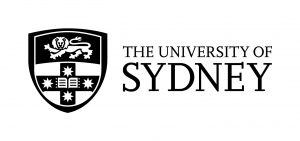The Sound, Image, Text symposium, held from August 25th to 26th 2023 in Canberra, brought together a range of art historians, musicologists and literary scholars to speak on Jean-Benjamin de Laborde’s long-forgotten illustrated songbook Choix de Chansons (1773) and other related topics. Here, you can browse the recordings of these lectures.
Associate Professor Erin Helyard
Music and Music-making in Laborde’s Chansons Pittoresques
The cultivation of French sensibilité in the eighteenth century reflected a dance around inherent contradictions. In the performance of music, for example, one must appear artless, natural, and unforced whilst at the same time making sure to mask the labour and concentration that went into the understanding, performance, and technical performance of texted music. The French chanson was seen as a perfect site for the cultivation of this kind of sensibilité. Montclair outlined the contradictions: “one must have not only a natural genius, a delicate taste, and a tender disposition [but] one also has to have a lot of soul to give them the expression which they demand, and of which very few people are capable.” Laborde’s Choix de Chansons also reflects the contradictions in contemporary music performance, and this paper outlines the ways in which the creative team behind the publication challenge but also aid the performers in their expressive endeavours. Read in this way, the Choix de Chansons constitute a kind of emotional handbook specifically curated for its newly immigrated dedicatee: Marie Antoinette.
Associate Professor Robert Wellington
Chansons Pittoresque: The Subscription Prospectus for Choix de Chansons
Dr Pia Van Gelder
Representing media from Choix de Chansons in choixdechansons.cdhr.anu.edu.au
Professor Mark Ledbury
The Choix de Chansons as an object of bibliographic desire
Dr Katrina Grant
he Choix de Chanson as a case study for thinking about how digital research methods support transdisciplinarity and the study of the history of material cultures
Our study of the past and our experience of historical art, music, and literature is now more often than not mediated via the screen and distributed via the web. Often when the digitisation of our material past is considered we discuss how to get from the real, physical object to a copy or a digital surrogate. But the reality of our experience now, especially as researchers, is that we usually start with the digital, the facsimile, and from there find our way back to the material. This digital mediation between object and researcher impacts differently on researchers who focus on different types of cultural histories. The transdisciplinary nature of the Choix de Chanson project offers an excellent opportunity to consider how the digital reproduction of material culture works differently across different disciplines in the humanities and how this approach might support better interdisciplinary studies across different forms of cultural production. Literary and textual studies are often regarded as getting out ahead in the use of digital methods because texts are assumed to have a semantic stability across different forms. The materiality of visual art on the other hand, even when it might exist as a multiple like the prints from the Choix de Chanson, is generally understood to be an inextricable part of its meaning. But we have still accepted that we can study it via reproductions. Music has always been an art that relied on reproduction through performance, and for many of us working on music from another disciplinary home, without the training to decipher musical notation it remains inaccessible without a performance that brings it back to life. This paper will take the Choix de Chanson digital edition, an example of a new mode of research and publication, as a case study to reflect on how digitisation, reproduction and online publication is reshaping our methods of study of the past across art, text and music and what new methods of researching it might open up in the future.
Mark Shepheard
Why Mrs. Bach was not the Queen of Spain: Musician Portraits and the Phenomenon of Citogenesis in the Digital Age.
In the field of portrait studies, traditional connoisseurship has served two essential purposes: to identify the artist and to identify the sitter. Recognizing a sitter’s face, therefore, can be just as important as recognizing an artist’s hand. The increased online access to digital reproductions of portraits—partially through collection digitization projects—should have made it considerably easier to identify sitters. Indeed, several well-publicized research projects—using digital collections and AI- assisted tools, such as facial-recognition software—have made vaunted claims of the extent to which computer science can support or even replace traditional art historical methodologies to identify hitherto anonymous works. But to what extent has the digital turn aided or hindered the identification of portrait sitters? This paper explores a form of circular reporting—citogenesis—that is becoming increasingly common in the digital age and its impact on the study and reception of musician portraits. Citogenic references to digital reproductions of ostensible musician portraits has led to a proliferation of mistaken identities. As a result, organizations such as radio stations, publishers, concert promoters, and even musicians themselves are using mistakenly identified portraits as part of their professional activities. But rarely the cultural institutions that own the original portraits or the art historians and musicologists studying them. Where do these errors occur and what is their cause? If it’s important to put a face to name, how do we ensure it’s the right face?
Dr Leo Murray, Dr Alys Daroy & Associate Professor Joshua Zeunert
Anthropoiesis
What does it mean to live enfolded by deep time when humans have become a new geologic agent? Anthropoiesis is a multidisciplinary arts/humanities response to ecological crises. Currently exhibited at Palazzo Bembo for the European Cultural Centre’s Venice Architecture Biennial, the soundscape invites us to reconfigure our relations with time, space and existence in the Anthropocene age. The work is inspired by David Farrier’s Anthropocene Poetics (2019) and explores interrelations of sound, image and text. The project combines original location recordings and archival material at differing geographical scales and historical moments. These sonifications are framed by the text and juxtaposed with music and a ‘visual poem’, inviting considerations of how digital methods in musicology, performance, design and literary studies may inform one another. This paper discusses this interactivity as a site of opportunity for further interdisciplinary collaboration and exploration. How may scholars develop and rework literature to create a multisensory experience for greater psychophysiological impact? Drawing on postcognitive ecology, ecological aesthetics and biophilic design, discussion investigates possible new directions in sound, image and text. The authors come from multiple disciplines – sound, performance, literature and design – and argue that a systems-thinking approach is not only an appropriate method for addressing ecological crises but also for generating more affective multimedia research
Nicholas Rogers
The stage sets for Richard Wagner’s Parsifal (1882), the Gesamtkunstwerk, and the culture of European Empire
Richard Wagner’s final opera Parsifal (1882) was among the great operatic spectacles of the nineteenth century. In a purpose-built theatre in a remote German town, Wagner’s beautiful and strange reworking of the Holy Grail myth unfolded over five hours. The stage painting, music, and dialogue were closely integrated to absorb the audience into an artwork charged with all the complex national, racial, and religious politics of the Victorian age. In this sense, the staging of Parsifal represents the fullest realisation of Wagner’s theory of the Gesamtkunstwerk, or “Total Work of Art”—the ambition for a synthesis of the arts of painting, poetry, and music, into a social and artistic utopia. Looking closely at the stage designs for Parsifal, however, a very different understanding of the Gesamtkunstwerk emerges. At the centre of the opera, Wagner inserted the most unlikely scene: a ballet of women dressed as flowers, dancing in a vividly painted magical garden. This was a dramatic fissure in the otherwise self-consciously sublime texture of Parsifal’s staging and music. The sources of this scene were not the Romantic painting tradition that had informed the rest of the stage sets, but the visual culture of Orientalism: paintings of harem scenes, exotic greenhouse decorations, and popular entertainments. In fact, the genesis of Parsifal reveals that the writing of this scene was directly inspired by the world’s fairs. These were massive exhibitions of arts and materials from across the world, assembled by the European powers to legitimate the integration of the globe through capitalist and violent exploitation. The relationship between the visual world of Parsifal and the nineteenth-century culture of imperialism suggests a new understanding of the Gesamtkunstwerk itself. This was the most important theory of intermediality of the nineteenth century, and Wagner’s most influential legacy to modernist art. Rather than an artistic utopia, its totality is revealed to be an ambition for dominion over the artistic and cultural resources of the world, whose scale was modelled on a world transformed by European empire.
Simon Rickard
Sunset over Arcadia:the decline of the baroque musette
The decades leading up the the French Revolution represent a significant turning point in that nation’s musical and social history. The career of the musette starkly illustrates this paradigm shift. The second and third quarters of the eighteenth century saw the musette fetishised by the French aristocracy. Laborde’s Choix de Chansons emerged into a milieu where the musette was ubiquitous. The Choix de Chansons depicts a musette in three of its illustrations, and explicitly mentions it in one of its songs. Seven years later, Laborde himself formally pronounced the musette dead. The musette’s demise was precipitated by both musical and social factors. That an instrument which enjoyed such cachet could disappear from musical culture so quickly and so completely is worthy of investigation.
Professor Dean W. Sutcliffe
Diplomacy or Honesty? Judging the Tone in Later Eighteenth-Century Music
One behavioural value associated with the “polite” culture of the eighteenth century is equanimity. This need not imply an absence of strong feelings, but it does involve regulating their open expression, as part of a widely agreed social contract. Diplomacy takes the place of honesty, as it were. Such a value has certainly proved problematic when considered in relation to the music of the later eighteenth century. It has contributed to the common image of an expressively circumscribed style, from which only a few exceptional composers managed to escape. Marshall Brown, on the other hand, states plainly that “concealment rather than passionate utterance was a core value of Enlightened manners”, and asks us to evaluate such an attribute more positively. But how to reconcile individual feeling with the restraint demanded by the principles of politeness was already a concern of the time. Sensibility seemingly marked a capacity for such personal feeling, but because of the need to “express”, indeed to “perform”, it, the danger was that sensibility would amount to nothing more than performance. In 1752 Quantz distinguished between unethical social simulation (“unfortunately, many dissimulate very often in their daily lives”) and an ethically neutral musical simulation, recommending the latter to performers as being “of the utmost necessity”. One of the most vivid embodiments of the anxiety about performance, both musical and social, takes place soundlessly, within the pages of Diderot’s Le neveu de Rameau. When the character “Him” mimes the playing of Alberti and Galuppi sonatas on a harpsichord, his face conveying the emotions that cannot be realized in actual sound, the character “Me” is prompted to ask “Are you being ironic or sincere?”. Building on this lead, I consider the ambiguous tone of much contemporary musical utterance: the uncertainty about whether a particular passage should be taken at face value. My case studies, involving works by Boccherini, Haydn and Gyrowetz, focus on the appearance of markedly simple, often pastoral material within a mixed topical palette, when it is not clear whether we are hearing self-sufficiently “natural” music or something that is too simple to be taken seriously.





